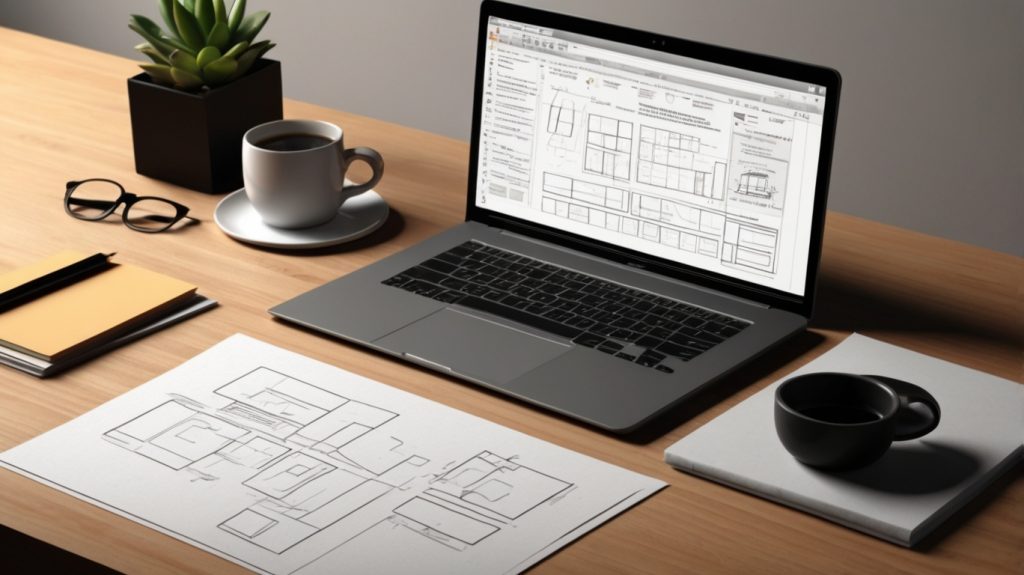
If you’ve ever landed on a website and felt instantly at ease, or instantly lost you’ve experienced the power of layout. A good page layout isn’t just about where things sit on the screen. It’s about guiding people through your content, making it easy to read, and helping them do what they came to do.
Let’s break down what makes a strong layout, even if you’re using a page builder and not writing a single line of code.
Table of Contents
ToggleStart With Clear Goals
Before you even choose a layout, ask: What’s the purpose of this page?
Is it to inform?
Get someone to contact you?
Encourage them to buy something?
Share a story or testimonial?
Knowing your goal will help you decide which sections you need and how to order them.
Think in Sections
A well-structured page usually has these common elements:
Header – Often includes your logo and main navigation.
Hero Section – The first thing visitors see. This might include a headline, a short message, and a call-to-action (like a button).
Main Content – This varies by page, but could be information about your service, a product list, or your story.
Supporting Content – Testimonials, FAQs, images, case studies, etc.
Call to Action (CTA) – Don’t leave people wondering what to do next. Use buttons or links to guide them.
Footer – Usually contains contact info, social links, a smaller menu, and legal links (like privacy policies).
You don’t need all of these on every page, but this is a good starting point for most.
Equally don’t go overboard with each page, if a user has to scroll through 1000s of words to get to what they want, the likeliness of them doing so diminishes.
Why the Order of Your Content Matters
When you design a page, it is about how the information flows. People decide quickly whether to stay on a website or leave. That is why it is so important to show them what they are looking for near the top of the page.
Think of your page like a conversation. Start by answering the most important question first. Give people a reason to stay and scroll down for more.
For example, if someone visits your home page, they probably want to know straight away what you offer and how it helps them. If you hide that information too far down, you risk losing their attention.
A simple guide is:
Top of the page: Clear headline and a short explanation about what you do
Next: Benefits or key services
Then: More detailed information, examples, or proof (like reviews or case studies)
Finally: A clear call to action, such as contacting you or making a booking
A good page layout guides the visitor naturally from one section to the next. Each part of the page should lead into the next without feeling confusing or crowded.
This is not just better for your visitors, it also helps with SEO. Search engines prefer pages that are well structured and easy to understand. There are many resources online about what is a good page layout. Check out Googles own resource here.
Visual Hierarchy Matters
Not everything should stand out equally. A good page layout leads the eye naturally down the page, helping people understand what matters most.
Use:
Headings to separate sections (check out our post on heading tags!)
White space to avoid clutter
Bold or coloured text sparingly to highlight key messages
Images to support your content, not distract from it
Consistency Builds Trust
Using different layouts on every page might seem fun, but it can make your site feel confusing. Try to keep:
Fonts consistent (same sizes for headings, same body text)
Button styles the same across all pages
Colours in line with your brand
Layout patterns predictable (e.g. hero first, content second)
Consistency makes your site feel professional and easier to use.
Use Grids and Alignment
Even if you’re dragging and dropping with a builder, grids are your friend. They help keep content aligned and evenly spaced, which creates balance on the page.
Many page builders have built-in column tools or templates, use them! Avoid putting items at random heights or off-centre unless there’s a reason for it.
Make It Mobile-Friendly
With more people browsing on phones, your layout must work well on smaller screens. Keep an eye on:
Font sizes (make sure they’re readable)
Buttons (big enough to tap easily)
Spacing (don’t crowd elements)
Stack order (ensure your layout flows top to bottom in a logical way)
Most page builders will show you a preview of your site on mobile, always check it! For more information on this check out this post on why designing for mobile devices is important.
Images: Use Them Wisely
We’ve talked before about the downside of stock images. Try to use original photos when possible, or make stock images feel more personal by adding your brand colours, overlays, or captions.
Remember, a good page layout isn’t just about where things go, it’s about what people feel when they visit. An image in the right place can help someone trust your brand faster. Don’t forget also lots of images use data which can slow down your page speed and affect user experience.
Let Your Content Guide the Layout
Back in our content planning post, we talked about mapping out what content goes on each page. Let that guide the structure. For example:
A service page might need a problem, solution, testimonial. CTA flow.
An about page might follow a story, team, values, contact format.
A contact page might just need a short intro, form, and map.
There’s no one right way, but the layout should match the message.
Test and Tweak
Once your page is live, don’t assume it’s perfect. Watch how people interact with it:
Are they scrolling far enough?
Clicking the button?
Confused about what to do next?
Make small changes and test what works. Even moving a button or changing a heading can make a big difference.
🧠 Final Thought
A good page layout makes your website clear, useful, and easy to use. It’s not about being flashy, it’s about helping your visitors find what they need without frustration.
Use your content plan, keep things consistent, and don’t over-complicate it. A good page layout feels simple because they’re designed with care.
